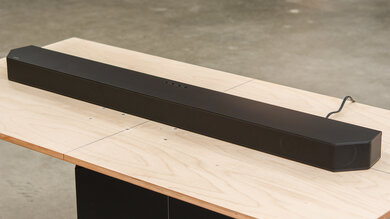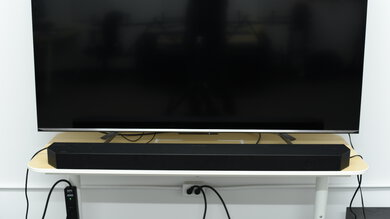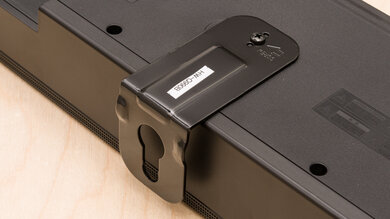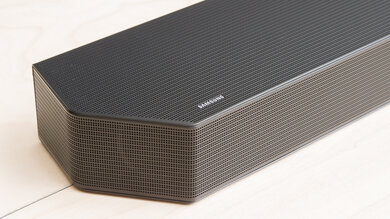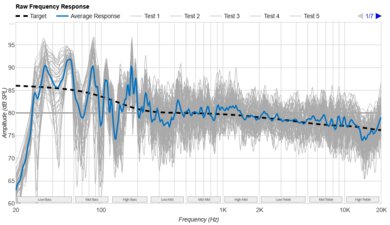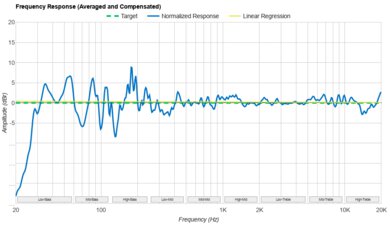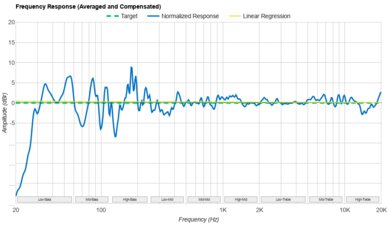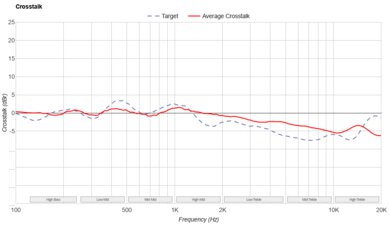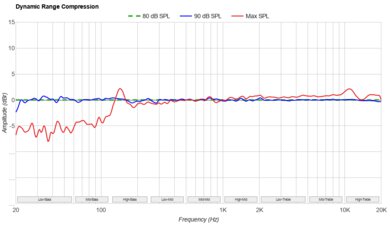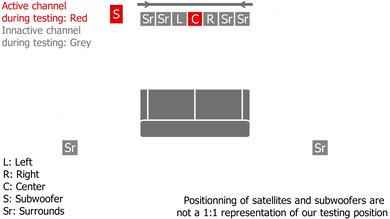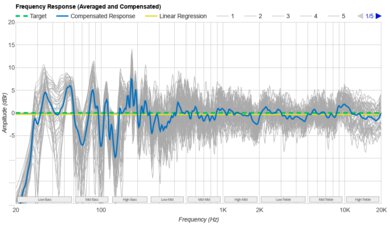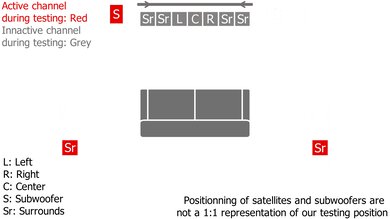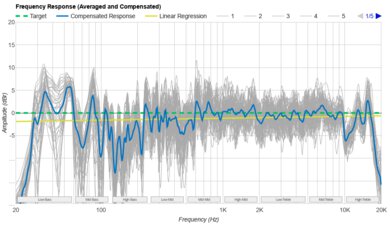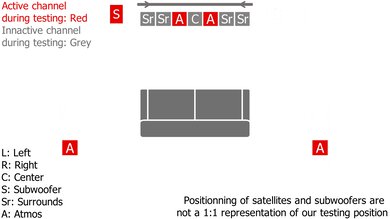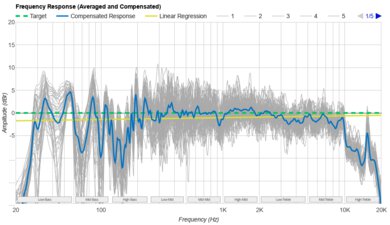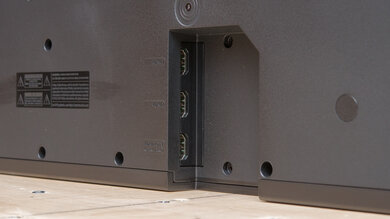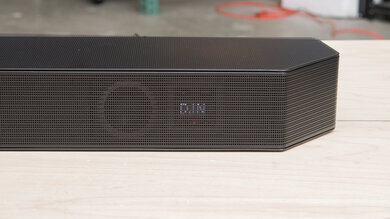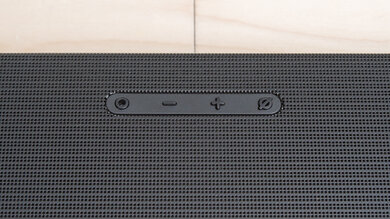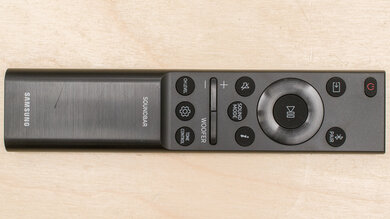The Bose Smart Soundbar 600 is a 3.0.2 setup with the same size and shape as the Bose Smart Soundbar 300. It adds Dolby Atmos capabilities, meaning you can enjoy height content on many different streaming platforms and Blu-rays. Even if you're watching stereo and 5.1 surround content, the bar's TrueSpace technology upmixes sound with added effects for a multi-channel experience. This version has built-in voice assistant capabilities, though Costco's Bose Soundbar 550 variant lacks this feature. You can even add a separate sub and satellites from the manufacturer to improve its performance. It was replaced by the 2024 Bose Smart Soundbar, but they have very comparable performances, and you may find both at retailers.
Our Verdict
The Bose Smart Soundbar 600 is satisfactory for mixed usage. It reproduces dialogue in your favorite TV shows with clarity, along with detailed voices and instruments in many different music genres. With its TrueSpace technology, you enjoy additional height effects, even when you listen to stereo and 5.1 surround content. Aside from its bass and treble adjustments, there aren't many customization tools, though, and you'll need to add on a sub and satellites if you want better bass reproduction and surround sound.
- Dolby Atmos support.
- Separate sub and satellites available.
- No EQ.
- Lacks low-bass.
The Bose Smart Soundbar 600 is decent for dialogue-centric TV shows and podcasts. Its discrete center channel improves vocal reproduction in the mix, with a clear and balanced sound that makes it easy to follow along with conversations on screen. You can even use its dialogue enhancement tool for a more crisp sound. The bar lacks an auto-volume mode, though, so you can't balance the volume level between different programs when you watch TV.
- Dialogue enhancement tool.
- Lots of wireless playback options.
- No EQ.
- No auto-volume mode.
The Bose Smart Soundbar 600 is decent for music. Its frequency response is quite balanced and even, with clear and accurate reproduction of voices and lead instruments in your favorite tunes. Thanks to its bass and treble levels, you can adjust its output, too. That said, there's not a lot of rumble in the low-bass, given that it's a standalone bar. You can improve its bass reproduction by adding a separate sub from the manufacturer, but it'll have to be a separate purchase.
- Bass and treble adjustments.
- Gets loud.
- No EQ.
- Some compression at max volume.
This soundbar is satisfactory for movies. The bar's TrueSpace technology upmixes all audio with additional height effects, bringing a more cinematic sound to your living room. It can play back Dolby Atmos content and 5.1 surround sound formats like Dolby Digital. However, without rear speakers, you don't get the same clear and real feel with sound effects. Without a sub, you also don't notice the same rumble in the bass, especially with action-packed scenes.
- Dolby Atmos support.
- Separate sub and satellites available.
- No EQ.
- Lacks low-bass.
Changelog
-
Updated Nov 18, 2024:
The sound sections were retested with firmware 9.0.11-1280+18778d5 and populated with new graphs and applicable text throughout. Sections affected are Stereo Frequency Response, Stereo Frequency Response With Preliminary Calibration, Stereo Soundstage, Stereo Dynamics, Center, Surround 5.1, and Height (Atmos). The Bose Smart Soundbar is also mentioned in the text.
- Updated May 10, 2024: Updated Stereo Dynamics results with new methodology from TBU 1.3. Added text to Audio Latency: ARC, and Audio Latency: Optical boxes.
- Updated May 09, 2024: We've converted this review to Test Bench Update 1.3. If applicable, we've retested stereo sound based on the manufacturer's recommendations. Additionally, we've expanded our audio latency tests to the following boxes: Audio Latency: ARC, Audio Latency: HDMI In, and Audio Latency: Optical. You can see the full changelog here.
- Updated Nov 17, 2023: Updated review text for clarity and consistency. No changes in test results.
Check Price
Differences Between Sizes And Variants
The Bose Soundbar 600 is available in Black. You can see the label for the model we tested here. It's also available at Costco as the Bose Soundbar 550, though this variant lacks voice assistant support.
If you encounter another version of this soundbar, let us know in the comments, and we'll update our review.
Popular Soundbar Comparisons
The Bose Soundbar 600 is the Dolby Atmos-enabled cousin of the Bose Smart Soundbar 300. Its built-in TrueSpace technology is unique from other Bose bars, as it upmixes stereo and surround sound with additional height effects. Given its small size, it's not much of a surprise that you don't get the same wide, cinematic feel as some of Bose's more premium models, like the Bose Smart Soundbar 900. However, it's a solid pick at a more affordable price if you don't want all the extra premium features. If you're shopping at Costco, you can also pick up the Bose Soundbar 550 variant, though it lacks voice assistant support. The Bose Smart Soundbar has replaced the Smart Soundbar 600 in the manufacturer's line-up, but they sound extremely similar.
You can also check out our recommendations for the best Dolby Atmos soundbars, the best Bose soundbars, and the best standalone soundbars.
The Sonos Beam (Gen 2) and the Bose Smart Soundbar 600 are both smart soundbars with Dolby Atmos support. Their small designs make them easy to fit into your living room, too, which is nice. The Sonos's stereo soundstage is better, resulting in a more immersive feel with your audio. It also supports DTS content, unlike the Bose.
The Bose Smart Soundbar is arguably almost the same as the Bose Smart Soundbar 600. They're the same size and sound very similar, with comparable performance. For most people whichever model you can find for less money is the better choice.
The Sonos Arc and the Bose Smart Soundbar 600 are standalone Dolby Atmos soundbars with smart features, such as built-in voice assistant support. The Sonos is better overall, with a wider stereo soundstage that makes audio stretch all around you as if you were in a movie theater. It's a bit bigger than the Bose and gets louder. Plus, you find more sound enhancement features, like room correction.
The Bose Smart Soundbar 900 is a better Dolby Atmos soundbar than the Bose Smart Soundbar 600. The 900 is a better-built 5.1.2 setup that's larger and gets louder than the 600. Plus, it offers a better soundstage with stereo content, meaning you get a more cinematic sound that stretches all around you.
Test Results



